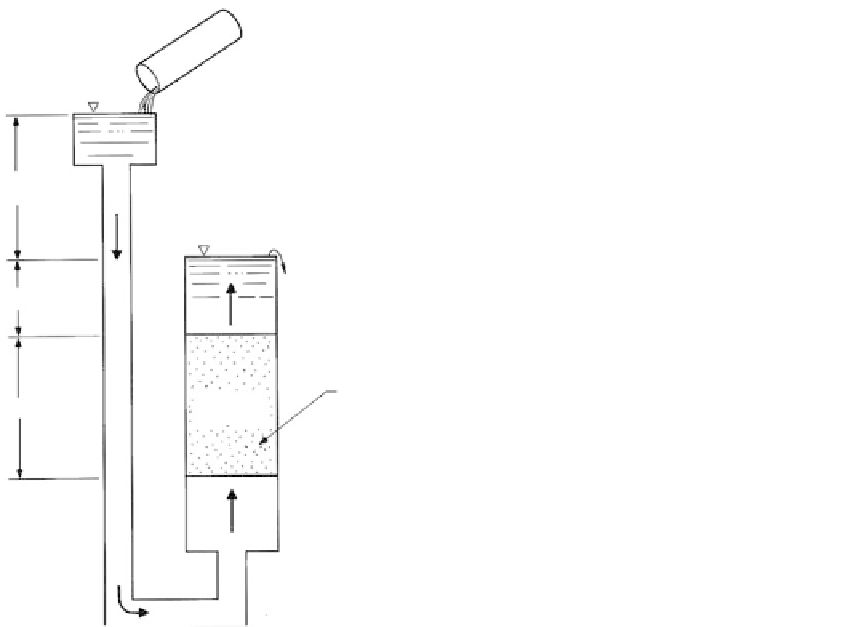Environmental Engineering Reference
In-Depth Information
Boundary water pressures
act on the specimen; on the bottom they are equal to the buoy-
ancy force (187.2 psf) plus the seepage force (124.8 psf), and on the top they are equal to the
water pressure (62.4 psf).
Effective Stresses
The effective stresses (
p
u
; see
Section 3.4.2)
may be found either from boundary
forces considering total soil weight, or seepage forces considering submerged weights. At
the bottom of the specimen in
Figure 8.26
,
σ
v
σ
v
equals either:
1.
Total specimen weight
LA
γ
t
plus the overlying water weight
zA
γ
w
minus the
pore-water pressure (
h
L
z
)
A
γ
w
, or
2.
Submerged specimen weight
LA
γ
b
minus the seepage force
hA
γ
w
. For
σ
v
0,
LA
γ
b
LA
γ
w
0 and a “quick” condition exists.
It is the development of high pore pressures as water levels rise in slopes that causes the
reduction in shear strength and slope failure. High pore pressures also develop in earth
dams when the phreatic level in the dam arises (
Figure 8.28)
and require consideration
during design. They are not of concern in properly designed and constructed dams.
Pore-Pressure Ratio r
u
Defined as a ratio between the pore pressure and the total overburden pressure or between
the total upward force due to water pressure and the total downward force due to the
weight of overburden pressure. It is used frequently in computer program analysis of
slope stability problems.
h
= 2 ft
= 0
z
= 1 ft
= 62.4 psf (1)
Area A
γ
t
=
127 pcf
L
= 2 ft
= 312 psf
FIGURE 8.26
Bouyancy water pressure during upward flow. At (1)
there is 249.6 psf lost in seepage.


